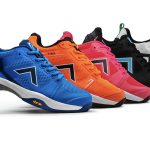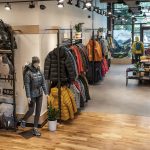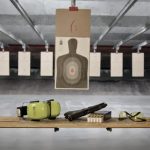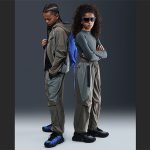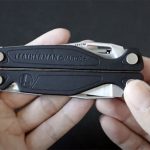Consumer spending for athletic footwear during the first six months of 2004 rose 5% over spending during the same period in 2003, according to research by The NPD Group. Spending during the first half was $7.73 billion in 2004, compared to $7.36 billion in 2003.
Going back to the second quarter of 2003, the industry has enjoyed five consecutive quarters in which spending increased over the same period a year earlier, but in the second half of this year it will be working against much stronger results in 2003. Spending was constrained during the first half of 2003 by consumer caution over the war in Iraq and weak economy, but accelerated sharply in the third quarter.
In 2004, the industry has also benefited from reduced emphasis on heavy price-cutting by retailers, which is also the continuation of a trend that began in the second half of 2003. The average price of a pair of athletic shoes declined 1.7% during the first six months to $35.47, due entirely to lower average prices for mens shoes, which are the most expensive. Average prices for womens and childrens shoes increased slightly.
“The third quarter is always a key to the success of the athletic footwear industry because of back-to-school sales, and that is especially true this year,” said Gregg Hartley, vice president of SGMA International, which announced the survey results. “The back-to-school period of 2003 produced the strongest quarter the industry has enjoyed in three years. A lot depends this year on whether retailers are going to be able to hold the line on prices.”
Consumers purchased 217.957 million pairs of athletic shoes during the first six months of 2004, 6.9% more than during the same period in 2003. The average price of a pair of mens shoes fell 3.2% to $44.03, while the average price of womens shoes increased 2.1% to $35.22 and childrens shoes rose 3.2% to $23.09.
After languishing for several years, spending for childrens athletic shoes has risen sharply in recent months. It was up 20% for the first half of 2004 after rising 12% in 2003. NPDs consumer data research indicates that spending for childrens footwear is growing strongly in a variety of retail channels, including athletic specialty stores, independent shoe stores and off-price stores. Style categories for children that are experiencing above-average growth include basketball, walking, running/jogging and low performance.
Among all wearers, running remained the most popular footwear style, capturing 29% of the market in non-discount stores. Sales of running styles at athletic footwear chains, sporting goods and department stores and national chains such as Sears and Penneys rose 7.6% during the period. Basketball styles, which held 23% of the market, grew only 1% at these stores.
Low performance styles dramatically out-performed the market, attracting a 55% increase in spending in these channels. NPD analysts said that consumers were being attracted by a wide choice of sharp colors, exclusive details and technology-based designs that include mesh and breathable perforated uppers.
During the first half of 2004, consumer spending for mens shoes rose 0.9% to $4.1 billion on a 4.1% increase in total pairs sold. Spending for womens shoes rose 4.5% to $2.171 billion on a 2.4% increase in total pairs. Spending for childrens shoes rose 19.9% to $1.458 billion on an increase of 16.2% in total pairs sold.
SGMA International, owner of The Super Show®, the Sports Research Partnership and “Sports Edge” magazine, is the global business trade association of manufacturers, retailers and marketers in the sports products industry. SGMA International enhances industry vitality and fosters sports, fitness and active lifestyle participation. www.SGMA.com
NPD Fashionworld, a division of The NPD Group, Port Washington, N.Y., uses the Internet to survey more than 40,000 consumers every week about their purchases of apparel and footwear. It also gathers point-of-sale data from many retailers. NPD gathers comprehensive sales and marketing information for more than 20 industries. More than 1,300 retailers and manufacturers use its data. www.NPD.com
| ATHLETIC FOOTWEAR MARKET SIZE ESTIMATES Consumer Spending in Billions of Dollars First Six Months – January Through June |
||||
| 2002 | 2003 | 2004 | Change 03-04 | |
| Men's | $4.170 | $4.066 | $4.100 | + 0.9% |
| Women's | 2.044 | 2.077 | 2.171 | + 4.5% |
| Children's | 1.120 | 1.217 | 1.458 | +19.9% |
| TOTAL | $7.334 | $7.360 | $7.730 | + 5.0% |
| 2004 column totals affected by rounding. |
||||
|
Pairs Purchased in Million
First Six Months – January Through June | ||||
| 2002 | 2003 | 2004 | Change 03-04 | |
| Men's | 92.700 | 89.436 | 93.128 | + 4.1% |
| Women's | 58.285 | 60.187 | 61.654 | + 2.4% |
| Children's | 52.678 | 54.365 | 63.174 | +16.2% |
| TOTAL | 203.664 | 203.988 | 217.957 | + 6.9% |
| Some column totals affected by rounding. |
||||
| SPENDING BY QUARTER in Billions of Dollars |
|||||
| Q1 | Q2 | Q3 | Q4 | Total |
|
2002 |
$3.650 | $3.684 | $4.393 | $3.966 | 15.694 |
2003 |
3.546 | 3.813 | 4.761 | 4.233 | $16.354 |
2004 |
3.842 | 3.899 | — | — | — |
| Change 03-04 |
+ 8.3% |
+ 2.2% |
|||
| Source: NPD Group/NPD FashionWorld consumer data estimates |
|||||
|
Average
Price Per Pair First Six Months – January Through June | ||||
| 2002 | 2003 | 2004 | Change 03-04 | |
| Men's | $44.99 | $45.56 | $44.03 | – 3.2% |
| Women's | 35.06 | 34.51 | 35.22 | + 2.1% |
| Children's | 21.26 | 22.38 | 23.09 | + 3.2% |
| Total Average |
$36.01 | $36.08 | $35.47 | – 1.7% |
| Some column totals affected by rounding. |
||||
|
|
||
| Share of market, 04 |
Change in Dollar Volume, 03-04 |
|
| Running | 28.9% | + 7.6% |
| Basketball | 23.3% | + 1.4% |
| Low performance | 8.5% | +54.9% |
| Cross-training/ fitness | 8.4% | -17.6% |
| Tennis | 5.0% | – 9.6% |
| Walking | 4.7% | -19.0% |
| Hiking | 3.4% | + 4.7% |
| Infants | 3.0% | + 1.4% |
| Work/Occupational/Safety | 3.0% | + 6.9% |
| Sport Sandals | 2.6% | -10.1% |
| Baseball | 2.3% | +15.9% |
| Other | 6.9% | N/A |
| Source: NPD Group/NPD Fashionworld point-of-sale data. Note: the data above are based on actual sales reported to NPD by department stores, national chains (such as J.C. Penneys and Sears), athletic footwear specialty chains and sporting goods stores. These stores sell more than 50% of all athletic footwear and an even larger percentage of performance styles. Data does not include sales in discount stores (such as Wal-Mart, Target and Kmart) or off-price stores.
Low performance = Casual athletic styles, canvas, suede, etc. Recreational boots = Hunting, fishing, waterproof Other = Aerobic, skateboard, soccer, recreational boots, golf, football, track & field, bowling, volleyball, wrestling, etc. |
||





